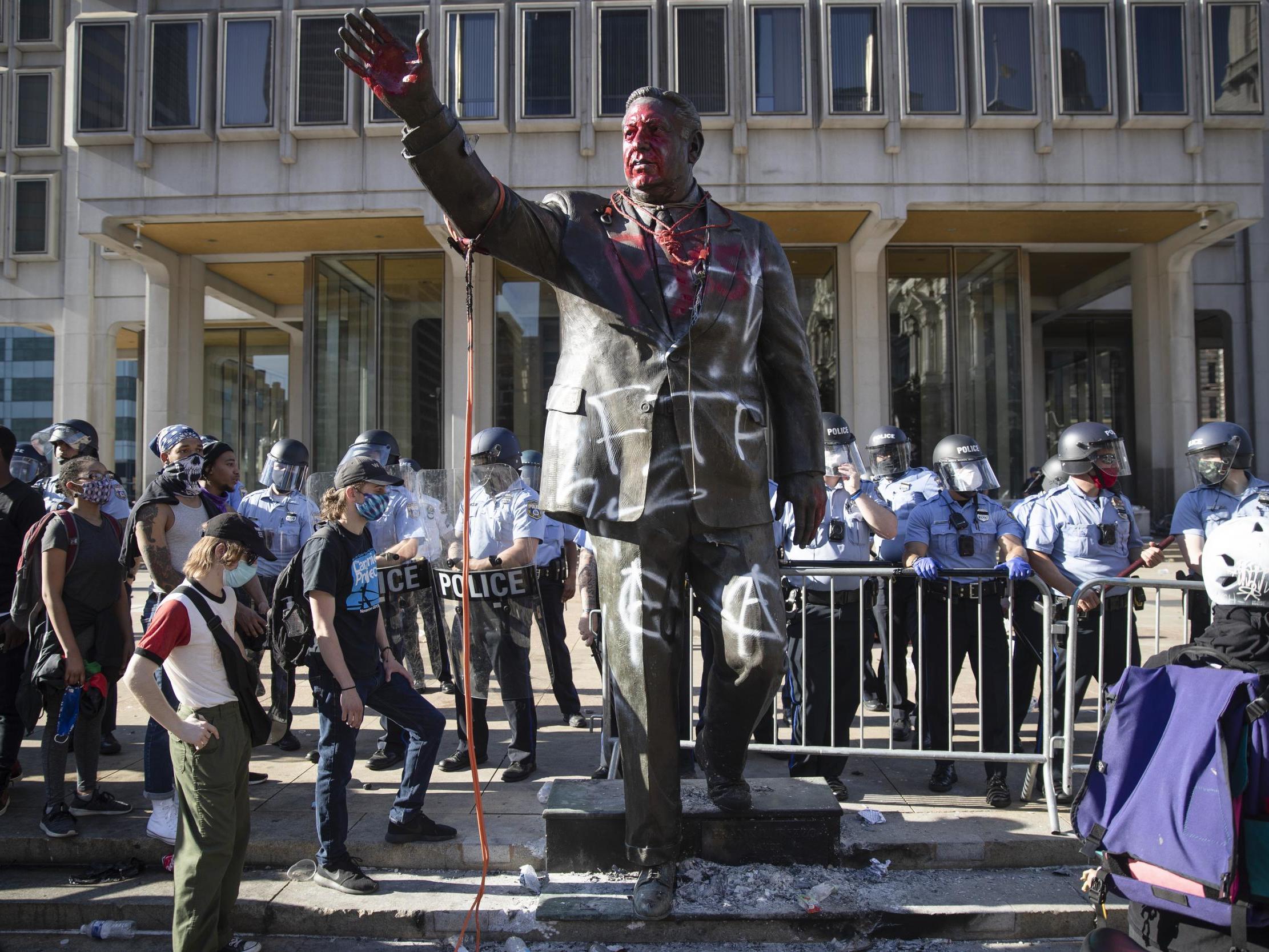Philadelphia removes controversial statue honouring former mayor accused of racism and homophobia
Frank Rizzo was a police commissioner before serving two terms as mayor in the 1970s

Your support helps us to tell the story
From reproductive rights to climate change to Big Tech, The Independent is on the ground when the story is developing. Whether it's investigating the financials of Elon Musk's pro-Trump PAC or producing our latest documentary, 'The A Word', which shines a light on the American women fighting for reproductive rights, we know how important it is to parse out the facts from the messaging.
At such a critical moment in US history, we need reporters on the ground. Your donation allows us to keep sending journalists to speak to both sides of the story.
The Independent is trusted by Americans across the entire political spectrum. And unlike many other quality news outlets, we choose not to lock Americans out of our reporting and analysis with paywalls. We believe quality journalism should be available to everyone, paid for by those who can afford it.
Your support makes all the difference.The city of Philadelphia has removed a controversial statue of a former Mayor Frank Rizzo, who had a legacy of racism and homophobia within the community.
Mr Rizzo worked as a police officer for three years before serving as mayor for two terms in the 1970s.
His statue in Philadelphia became a point of conflict for George Floyd protesters in recent days who wanted the statue to be removed.
Mayor Jim Kenney previously said the statue would be removed in the next couple months following pleas from residents, but the government decided to instead take down the statue overnight.
“I think that the protests over the last week – and hopefully we’re winding down – have shown us the anger and the distress of people of colour in this country,” Mr Kenney told reporters Wednesday morning. “And that statue was representative of that era. It had to go away in order for us to understand where we need to be going forward.”
The mayor also tweeted images of the statue getting taken down, writing: “The statue represented bigotry, hatred, and oppression for too many people, for too long. It is finally gone.”
Mr Rizzo, who died in 1991, was known for being a strong opponent of the desegregation of schools. He also urged constituents to “Vote White” when running for a third term and prevented construction of public housing in majority-white neighbourhoods.
“Just wait after November, you’ll have a front row seat because I’m going to make Attila the Hun look like a f*****,” he said about his enemies during a 1975 re-election bid.
The Philadelphia Inquirer won a Pulitzer Prize in 1978 for documenting the history of police brutality displayed in the city while under Mr Rizzo’s leadership.
A 2,000-pound statue was erected in 1999 for the mayor in front of City Hall, but it became a source of vandalism and frustration to constituents unhappy with Mr Rizzo’s history. Anger towards the statue heightened in 2017 following the protests in Charlottesville.
“The continued display of the statue has understandably enraged and hurt many Philadelphians, including those protesting the heinous murders of George Floyd and too many others. I have seen and heard their anguish. This statue now no longer stands in front of a building that serves all Philadelphians,” Mr Kenney said.
“The statue is a deplorable monument to racism, bigotry, and police brutality for members of the Black community, the LGBTQ community, and many others. The treatment of these communities under Mr Rizzo’s leadership was among the worst periods in Philadelphia’s history,” he added. “The battle for equal rights and justice is still being fought decades later, and our city is still working to erase that legacy. We now need to work for true equity for all Philadelphia residents, and toward healing our communities. The removal of this statue today is but a small step in that process.”
Zenos Frudakis, a sculptor who created the statue, said he was “relieved” to learn the city removed his piece from in front of City Hall, according to The Philadelphia Inquirer.
“I’m a human being before I’m an artist. The human being part of me was saying ‘I don’t want people hurt.’ It’s not about my sculpture, my ego,” he said. “I don’t want the sculpture damaged, either. To take it out safely and quietly was the right thing to do.”
Subscribe to Independent Premium to bookmark this article
Want to bookmark your favourite articles and stories to read or reference later? Start your Independent Premium subscription today.
Join our commenting forum
Join thought-provoking conversations, follow other Independent readers and see their replies
Comments